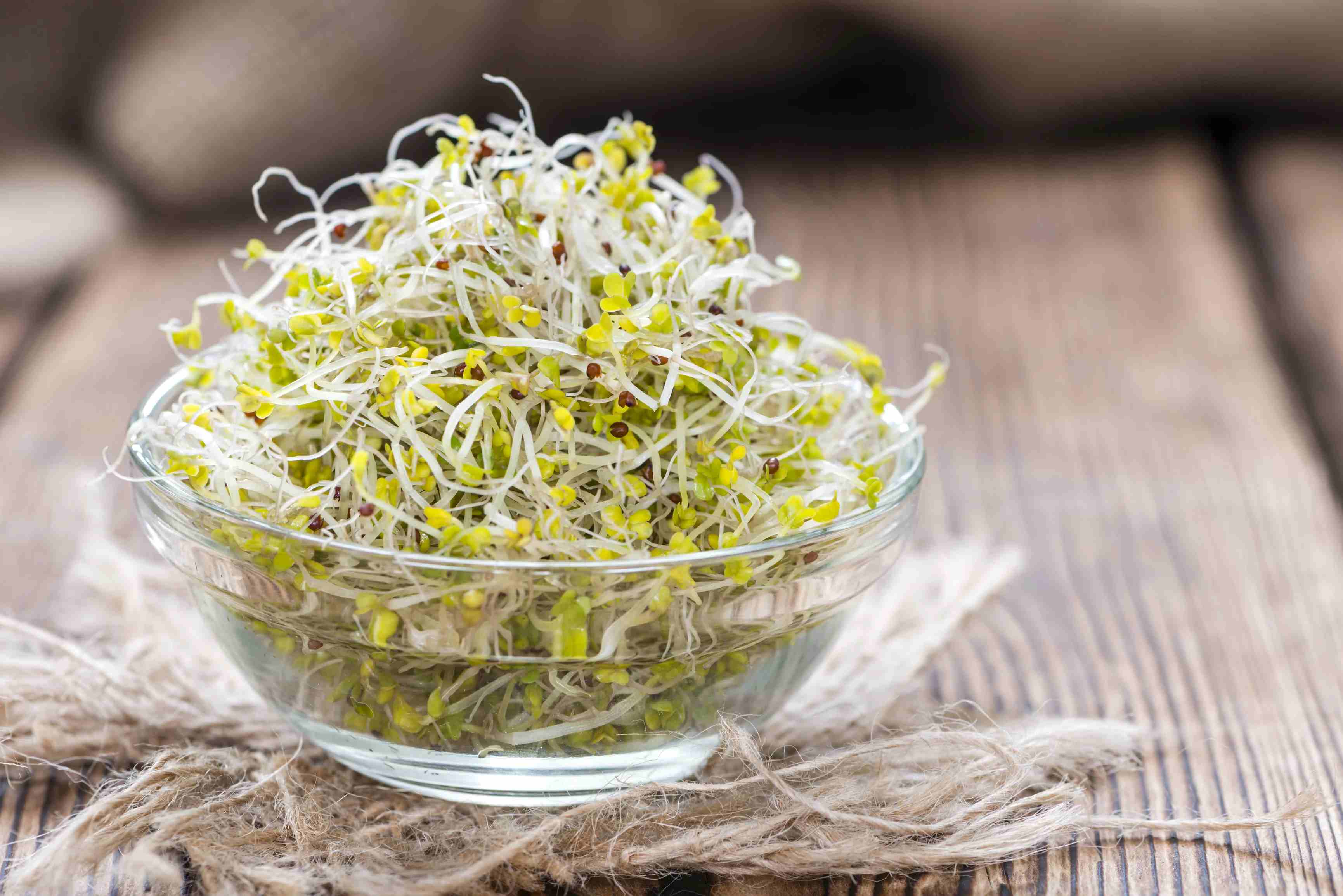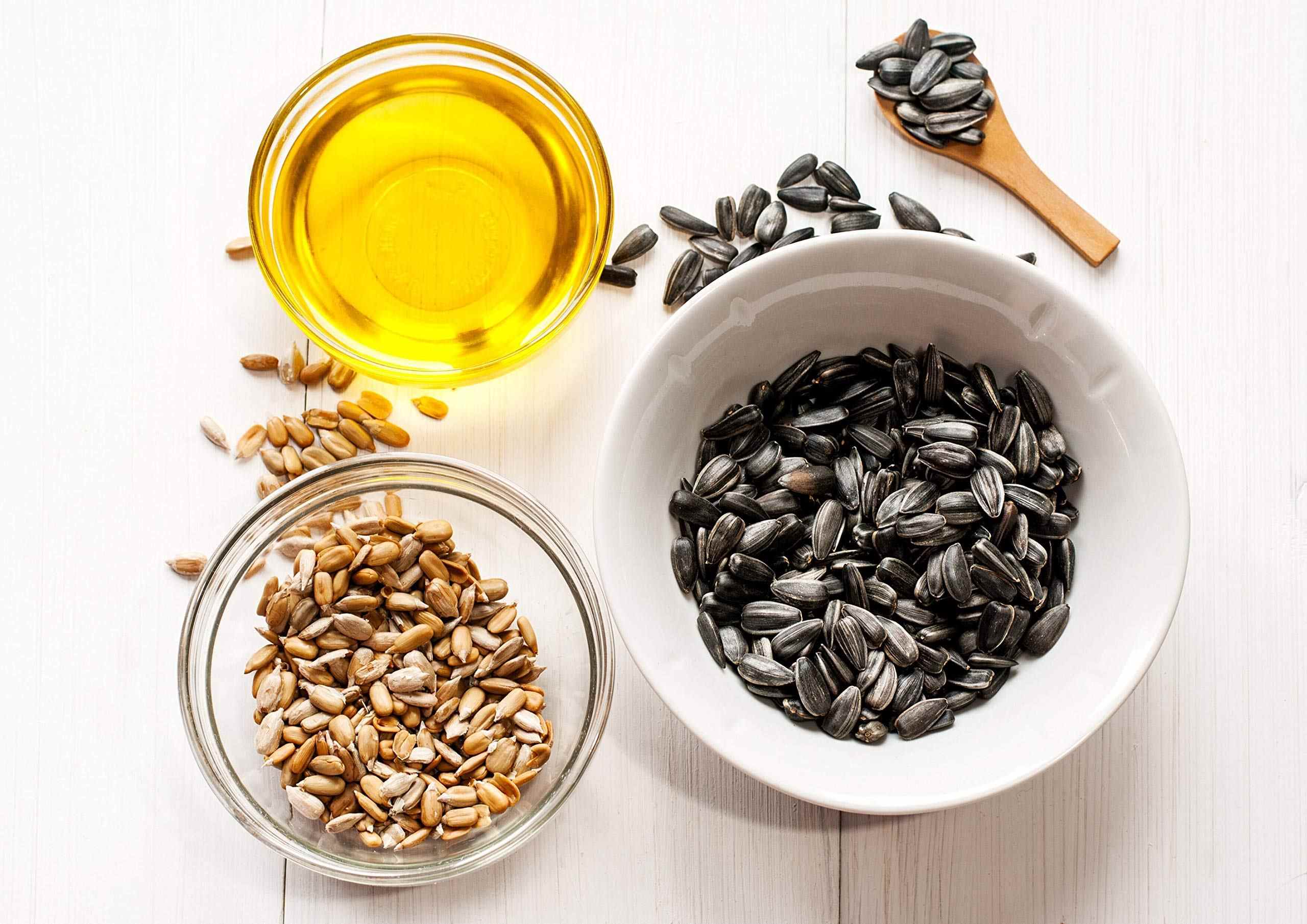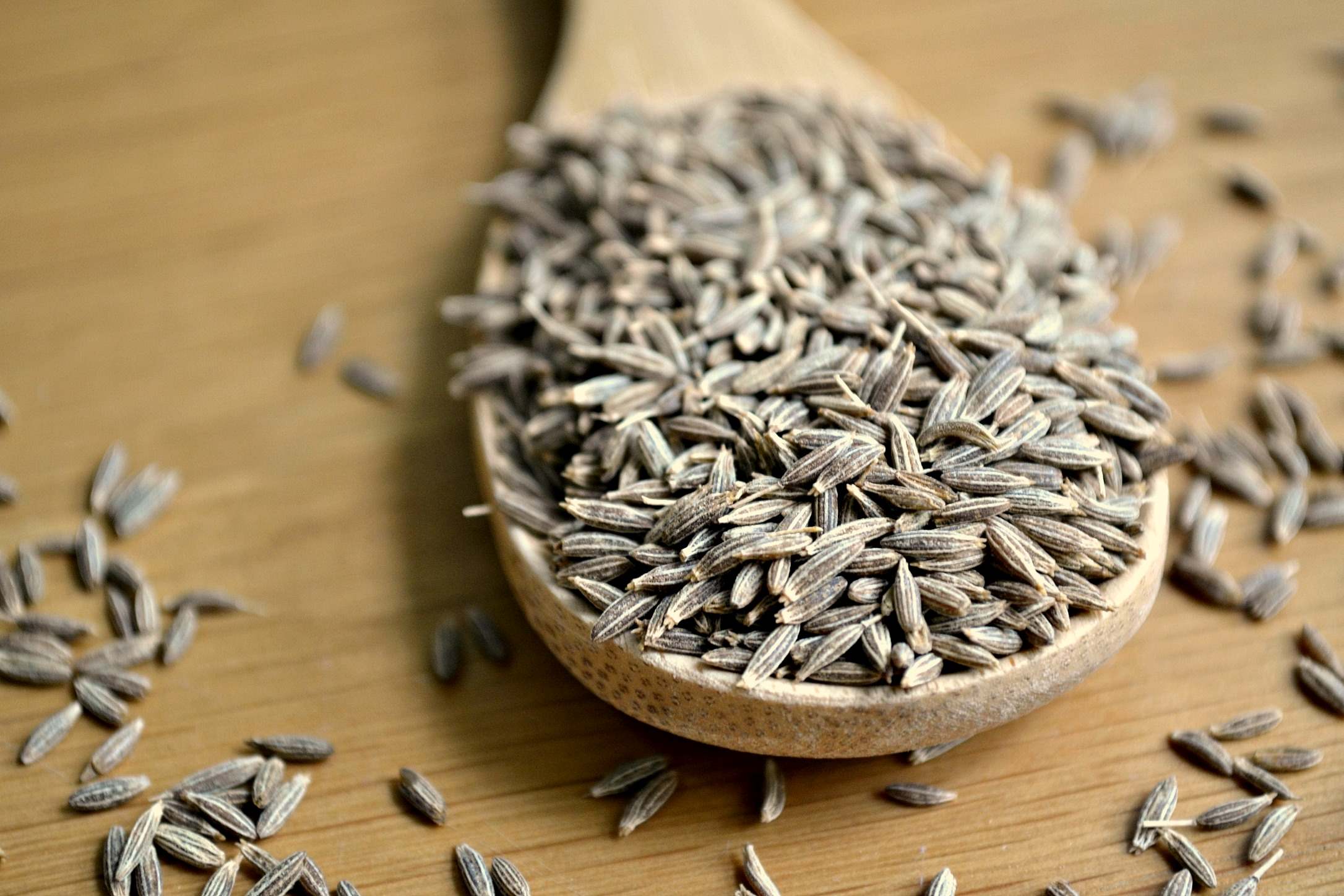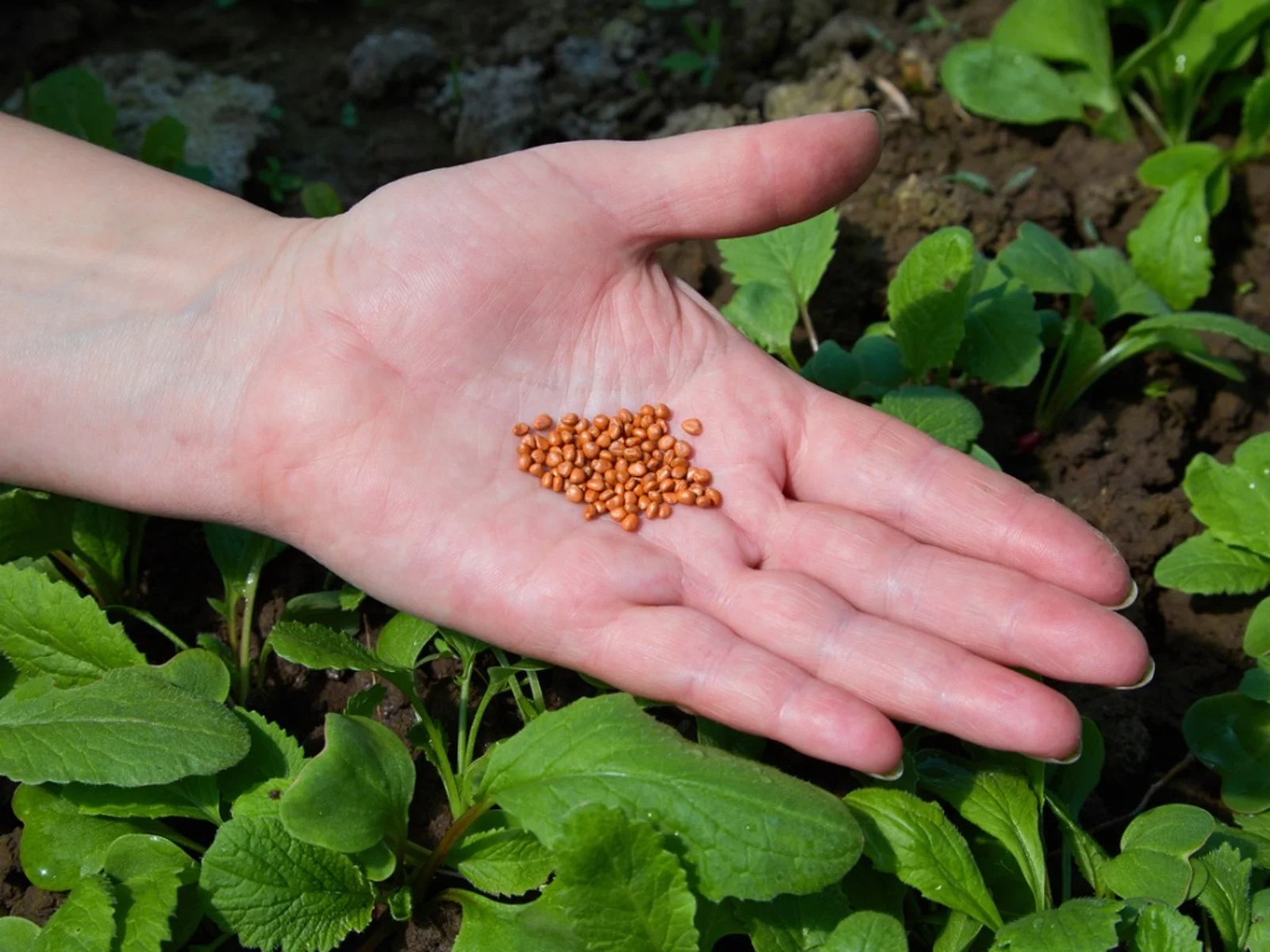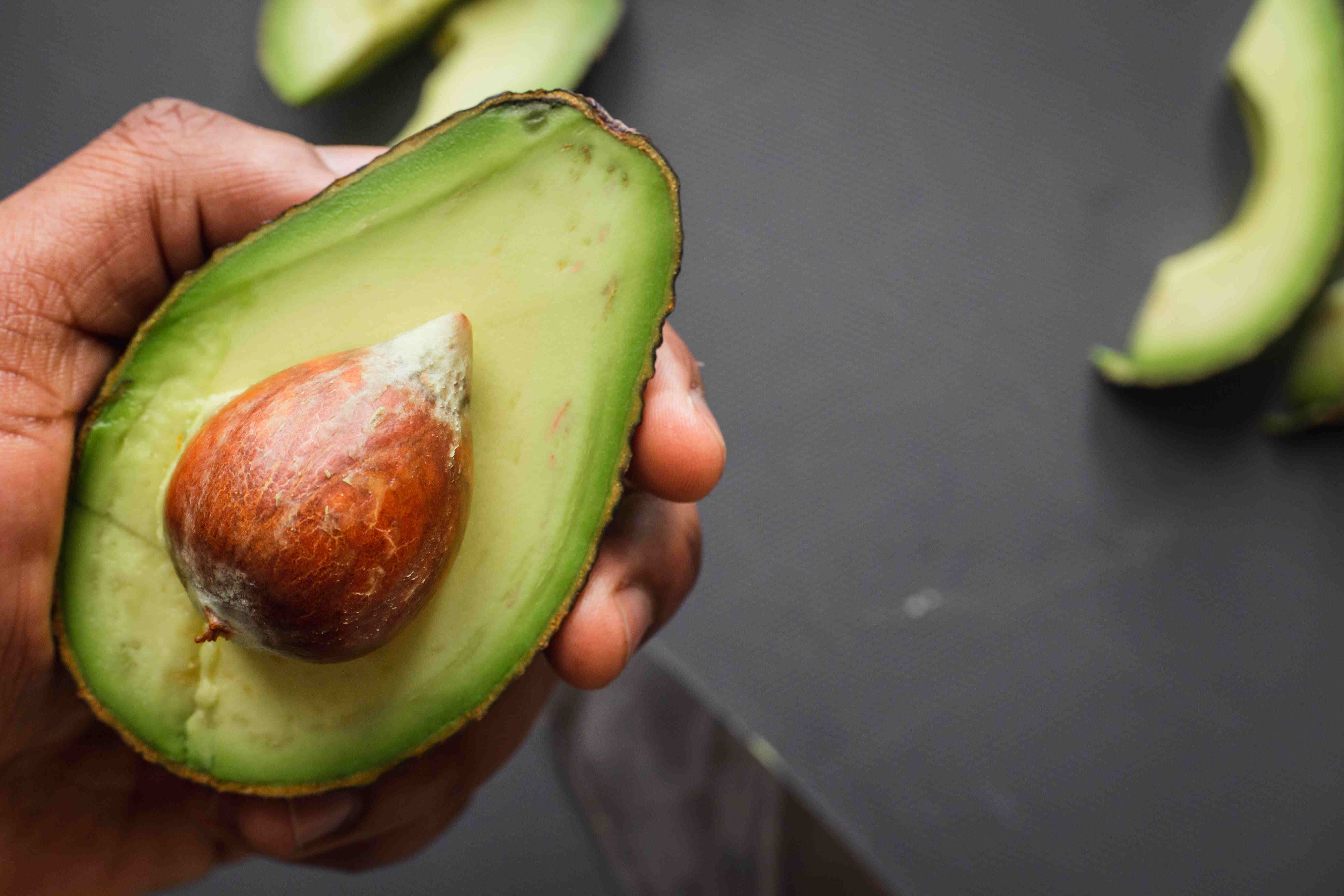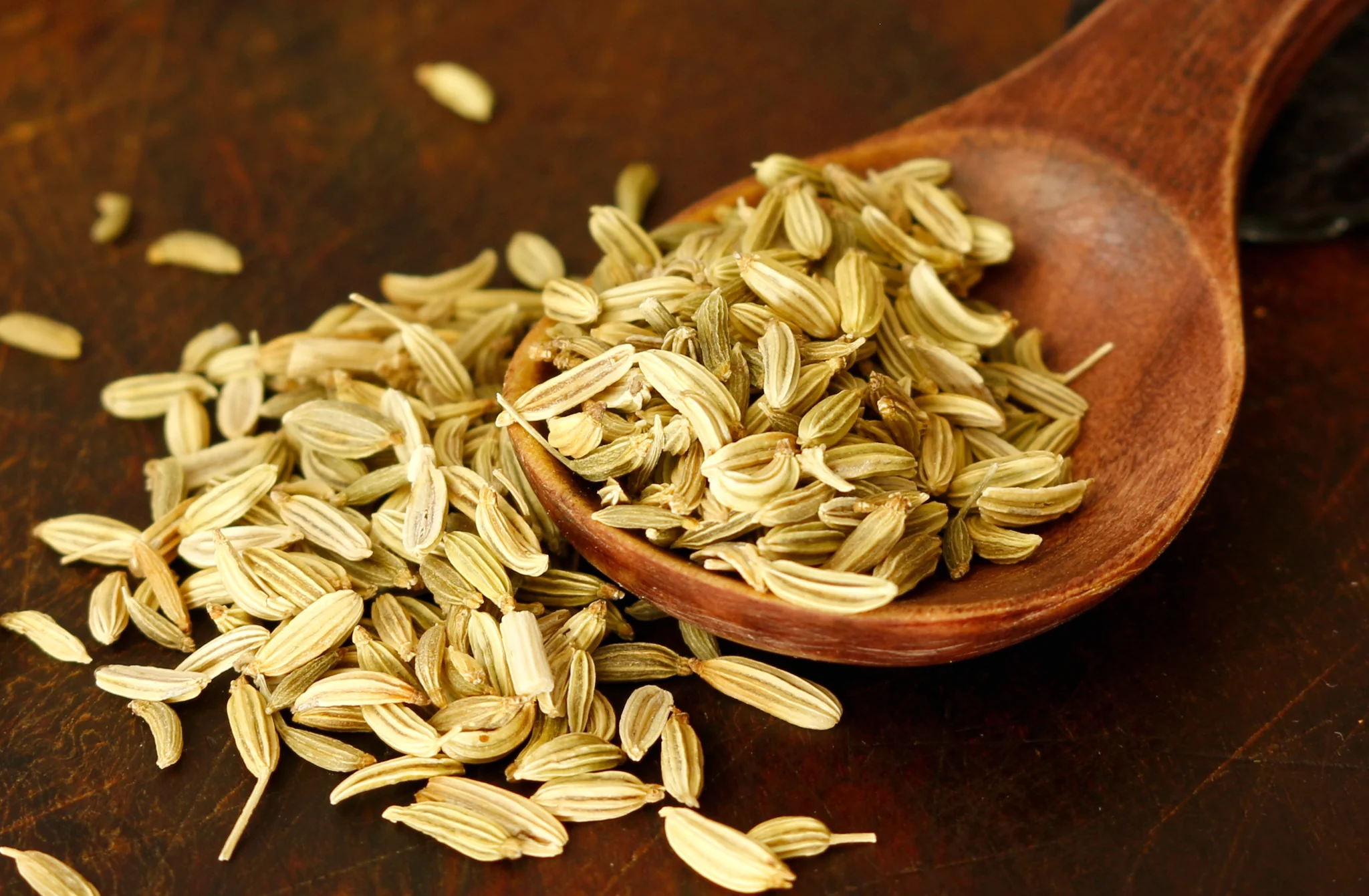Home>Types of Gardening>Ornamental Gardening>What Are Seeds And Leechers


Ornamental Gardening
What Are Seeds And Leechers
Modified: February 8, 2024
Learn about seeds and leachers in ornamental gardening and enhance your gardening skills with valuable tips and techniques.
(Many of the links in this article redirect to a specific reviewed product. Your purchase of these products through affiliate links helps to generate commission for Chicagolandgardening.com, at no extra cost. Learn more)
Table of Contents
Introduction
Welcome to the fascinating world of ornamental gardening! If you have a passion for flowers, plants, and creating beautiful outdoor spaces, then you’re in the right place. Ornamental gardening is the art of cultivating and arranging plants for their aesthetic appeal. It allows you to transform your garden into a vibrant and visually appealing sanctuary.
Whether you have a small balcony or a sprawling backyard, ornamental gardening offers endless possibilities and creative opportunities. From colorful flowers to lush foliage, there are countless plant species to choose from to create the garden of your dreams.
In this article, we will explore the enchanting realm of ornamental gardening, providing you with valuable insights and practical tips to unleash your inner gardening aficionado. From understanding different plant species to learning how to care for your garden, we will cover it all.
Let’s dive in and discover the secrets of ornamental gardening, unlocking the key to creating a captivating and picturesque outdoor space.
Definition of Seeds
Seeds are the tiny, encapsulated packages of life that serve as the starting point for the growth and development of plants. They are essentially the reproductive units of plants, containing the genetic material necessary for the production of new individuals. Seeds are formed as a result of the fertilization process, where the male pollen combines with the female ovule within the flower.
At their core, seeds consist of three main components: the embryo, endosperm, and seed coat. The embryo is the miniature plant embryo, containing the primary shoot and root systems that will develop into the plant. The endosperm serves as a source of nourishment for the developing embryo, providing essential nutrients such as starch and proteins. Lastly, the seed coat protects the embryo and endosperm, acting as a barrier against external threats such as pests, diseases, and harsh environmental conditions.
Seeds come in a vast array of sizes, shapes, and colors, reflecting the diversity of plant species. They can be as tiny as a pinhead or as large and imposing as a coconut. Additionally, seeds exhibit various methods of dispersal, including wind, water, animals, and even explosion in some cases.
The importance of seeds in the plant kingdom cannot be overstated. They are not only instrumental in plant reproduction but also serve as a means of survival for many species. Seeds have evolved fascinating adaptations that allow them to withstand adverse conditions, such as drought or freezing temperatures, and remain dormant until favorable growth conditions arise. This remarkable ability ensures the survival and proliferation of plants, even in challenging environments.
Understanding the intricacies of seeds is fundamental to successful ornamental gardening. By selecting and caring for seeds with precision, gardeners can unlock the potential for vibrant blooms, lush foliage, and thriving plant communities in their gardens. Whether you are starting from scratch with seeds or nurturing young seedlings, the journey from seed to full-grown plant is a rewarding and awe-inspiring experience.
Types of Seeds
Seeds come in a wide range of types, each with its own unique characteristics and requirements. Understanding the different types of seeds is essential for successful ornamental gardening. Let’s explore some of the most common types:
- Flower Seeds: These seeds are derived from flowering plants and are popular choices for ornamental gardening. Flower seeds offer a wide variety of colors, shapes, and sizes, allowing you to create stunning displays in your garden. Some popular flower seeds include roses, sunflowers, petunias, marigolds, and pansies.
- Herb Seeds: Herb seeds are perfect for adding flavor and fragrance to your garden. From culinary herbs like basil, thyme, and cilantro, to medicinal herbs like chamomile and lavender, these seeds offer a wealth of possibilities. Herb seeds are often easy to grow and can be a great option for beginner gardeners.
- Vegetable Seeds: Growing your own vegetables can be a rewarding experience, both in terms of taste and sustainability. Vegetable seeds come in a variety of types, including leafy greens like lettuce and spinach, root vegetables like carrots and potatoes, and vine vegetables like tomatoes and cucumbers. By planting vegetable seeds, you can enjoy fresh, homegrown produce right from your garden.
- Fruit Seeds: Fruit seeds allow you to grow a range of delicious and nutritious fruits in your garden. From apples and oranges to strawberries and watermelons, fruit seeds offer a chance to savor the sweet rewards of your gardening efforts. It’s important to note that certain fruits require specific conditions to thrive, so research and proper care are essential.
- Tree and Shrub Seeds: If you have enough space and patience, growing trees and shrubs from seeds can be a fulfilling endeavor. Tree and shrub seeds require more time and attention, as their growth and development can span several years. However, the result can be a majestic and long-lasting addition to your landscape.
These are just a few examples of the types of seeds that can be used in ornamental gardening. Each type offers its own unique set of requirements, so it’s important to research and understand the specific needs of the seeds you choose to cultivate. By selecting the right seeds and providing them with the proper care, you can nurture a flourishing garden filled with beauty, fragrance, and even edible delights.
Characteristics of Seeds
Seeds possess a multitude of fascinating characteristics that contribute to their survival, dispersal, and successful germination. Understanding these characteristics is crucial for ornamental gardeners to provide optimal conditions for seed growth. Let’s explore some key characteristics of seeds:
- Viability: Viability refers to the ability of a seed to germinate and grow into a healthy plant. The viability of seeds can vary depending on factors such as age, storage conditions, and the specific plant species. Testing the viability of seeds before planting can help ensure successful germination.
- Dormancy: Dormancy is a mechanism that allows seeds to remain in a state of suspended animation until environmental conditions become favorable for growth. During dormancy, seeds can withstand adverse conditions such as extreme temperatures, drought, and lack of light, ensuring their long-term survival. Various factors, including temperature fluctuations, moisture, and light exposure, can break seed dormancy and initiate germination.
- Germination Requirements: Seeds require specific environmental conditions to germinate successfully. Factors like temperature, moisture, oxygen availability, and light play crucial roles in triggering germination. Some seeds may require stratification, a process of artificially subjecting them to cold temperatures to break dormancy and promote germination.
- Seed Longevity: The longevity of seeds varies depending on the plant species. Some seeds can remain viable for a few months, while others have the potential to remain dormant for years or even decades. Proper seed storage in cool, dry, and dark conditions can extend their shelf life and preserve their viability.
- Seed Size and Shape: Seeds come in diverse sizes and shapes, often reflecting the specific adaptations of the plant species. Some seeds are small and round, while others may be large and elongated. The size and shape of seeds can influence their dispersal mechanisms and the availability of nutrient reserves for seedling growth.
- Seed Dispersal Methods: Seeds have evolved various mechanisms for dispersal, ensuring their wider distribution and reducing competition among offspring. Dispersal methods include wind dispersal, where lightweight seeds are carried by air currents, water dispersal, where seeds float and are transported by rivers or oceans, animal dispersal, where seeds hitchhike on fur, feathers, or digestive systems, and explosive dispersal, where seeds are forcefully ejected from their seed pods.
Understanding the characteristics of seeds enables gardeners to mimic and provide the ideal growing conditions for successful germination and subsequent plant development. By considering these characteristics when selecting and caring for seeds, you can nurture a thriving garden filled with a rich array of plant life and beauty.
Importance of Seeds in Plant Reproduction
Seeds play a vital role in the reproduction and survival of plants. They serve as the primary means of dispersal, ensuring the colonization of new areas and the continuation of plant populations. Let’s explore the importance of seeds in plant reproduction:
Genetic Diversity: Seeds are essential for maintaining genetic diversity within plant populations. Through sexual reproduction, seeds combine genetic material from two parent plants, leading to offspring with unique combinations of traits. This genetic diversity is crucial for the adaptation and evolution of plants in response to changing environmental conditions, pests, and diseases.
Dispersal: One of the key roles of seeds is dispersal, allowing plants to spread their offspring to new locations. Seeds have evolved various mechanisms for dispersal, ensuring that they can reach suitable habitats with access to resources for growth. By colonizing new areas, plants can avoid overcrowding and maximize their chances of survival and successful reproduction.
Survival Strategies: Seeds possess remarkable adaptations that enhance their chances of survival. Dormancy allows seeds to remain quiescent until favorable conditions for germination arise. This dormancy period can protect seeds from harsh environmental conditions, such as drought, freezing temperatures, or competition from other plants. Additionally, some seeds have protective seed coats that safeguard them from predation and provide resistance against pathogens and diseases.
Environmental Restoration: Seeds are instrumental in ecological restoration efforts. They are used to revegetate and restore degraded landscapes, such as mine sites, deforested areas, and damaged ecosystems. By reintroducing native plant species through seeds, these areas can regain biodiversity, stabilize soil, improve water quality, and provide habitat for wildlife.
Food Security: Seeds are the foundation of global food production. Crops, such as cereals, legumes, fruits, and vegetables, rely on seeds for propagation. The cultivation and germination of seeds are essential for ensuring food security and sustaining human populations worldwide.
Economic Importance: Seeds have significant economic value. The seed industry encompasses breeding, production, and distribution of seeds for agricultural purposes as well as the ornamental gardening market. The cultivation and trade of seeds contribute to the economy and provide livelihoods for many people involved in the agricultural and horticultural sectors.
Overall, seeds are vital to the reproductive success, genetic diversity, and survival of plants. They are nature’s way of ensuring the continuation of plant species and the perpetuation of ecosystems. By recognizing and appreciating the importance of seeds, we can better understand and harness their potential for plant propagation, ecological restoration, and sustainable agriculture.
Definition of Leachers
Leachers, also known as soil leaching agents, are substances that have the ability to dissolve or wash out soluble nutrients and minerals from the soil. This natural process occurs when water percolates through the soil profile, carrying these nutrients downward and out of the root zone. Leaching is an important aspect of soil fertility and nutrient cycling, as it helps to maintain a balanced nutrient composition in the soil.
Leaching agents can include various substances, such as rainwater, irrigation water, and excess fertilizers. Rainwater, for example, can leach out nutrients from the soil when it penetrates the ground. Excessive irrigation can also contribute to leaching, as water applied in excess of the plant’s needs can carry away valuable nutrients.
The leaching process occurs primarily in soils that have a high permeability, allowing water to pass through quickly. Sandy soils, for instance, are more prone to leaching due to their loose structure, which allows for faster movement of water. On the other hand, clay soils, with their finer particles and higher water-holding capacity, tend to retain nutrients and experience less leaching.
It is important to note that while leaching can be beneficial in preventing nutrient buildup and maintaining soil health, excessive leaching can be detrimental. Over time, continuous leaching can lead to nutrient depletion, resulting in nutrient deficiencies and reduced plant growth.
Managing leaching in the context of ornamental gardening requires a balanced approach. Proper irrigation practices, including efficient water use and avoiding excessive watering, can help minimize leaching while ensuring plants receive adequate moisture. Additionally, using organic matter amendments, such as compost, can help improve soil structure and nutrient holding capacity, reducing the likelihood of nutrient leaching.
Understanding the role of leaching agents and their impact on soil fertility is crucial for maintaining a healthy and productive garden. By managing leaching effectively, gardeners can optimize nutrient availability, promote plant growth, and contribute to the long-term sustainability of their ornamental gardens.
Types of Leachers
The leaching process involves the movement of nutrients and minerals through the soil, carried by various leaching agents. Understanding the different types of leaching agents can help gardeners identify and manage nutrient loss in their ornamental gardens. Let’s explore some common types of leachers:
- Rainwater: Rainwater is one of the primary natural leaching agents. As rainwater infiltrates the soil, it can dissolve and wash away soluble nutrients, carrying them downwards into deeper soil layers or even out of the root zone. The intensity and frequency of rainfall events play a significant role in the leaching process.
- Irrigation Water: Irrigation practices can contribute to leaching, particularly when excessive water is applied. Overwatering can cause water to move through the soil quickly, carrying nutrients away from the plant root zone. Improper irrigation scheduling and techniques can lead to nutrient loss through leaching.
- Excess Fertilizers: The application of fertilizers in excessive amounts or improper timing can result in excess nutrients in the soil, leading to leaching. When more nutrients are available than what plants can uptake, the excess can be washed away by irrigation or rainfall. It is important to apply fertilizers according to plant needs and follow recommended application rates to minimize leaching.
- Acidic Water: Acidic water can enhance the leaching process, particularly for certain nutrients like calcium and magnesium. Acidic rainfall, alkaline soil conditions, or water high in acidity due to pollution can contribute to increased leaching of essential nutrients.
- Soil Erosion: Soil erosion, caused by factors such as wind or water runoff, can lead to the loss of topsoil and associated nutrients. As the top layer of soil is eroded, the fertile soil and its essential nutrients are carried away, resulting in nutrient depletion and potential leaching.
- Root Uptake: Plant roots can also contribute to leaching by absorbing nutrients from the soil and subsequently releasing them back into the environment. This process, known as root exudation, can result in the release of certain organic compounds and nutrients that may be susceptible to leaching.
Understanding the types of leachers and their influence on nutrient movement is essential for managing soil fertility in ornamental gardens. By implementing appropriate irrigation practices, using fertilizers judiciously, and taking measures to prevent soil erosion, gardeners can minimize nutrient loss through leaching and promote healthy plant growth.
Role of Leachers in Soil Fertility
Leachers play a significant role in soil fertility by contributing to nutrient cycling and maintaining a balanced nutrient composition in the soil. While excessive leaching can lead to nutrient loss and depletion, moderate leaching is a natural process that helps prevent nutrient buildup and ensures the availability of essential elements for plant growth. Let’s explore the role of leachers in soil fertility:
Nutrient Redistribution: Leaching agents, such as rainfall and irrigation water, help redistribute nutrients within the soil profile. As water moves through the soil, it carries dissolved nutrients downwards, making them available to plants with deeper root systems. This redistribution allows nutrients to move from areas of high concentration, preventing nutrient imbalances and promoting balanced nutrient uptake for plant growth.
Nutrient Cycling: Leaching is a vital component of nutrient cycling in ecosystems. It helps transport excess nutrients that are not immediately used by plants, preventing their accumulation in the topsoil. These nutrients can then be accessed by other plants in different areas, contributing to the overall nutrient availability and promoting biodiversity.
Prevention of Nutrient Buildup: Continuous leaching helps prevent nutrient buildup in the soil, particularly in systems with excess nutrient inputs. When nutrients such as nitrogen and potassium are applied in excessive amounts through fertilizers, the leaching process helps remove the surplus, preventing nutrient imbalances and potential toxicity issues for plants.
pH Regulation: Leaching can also contribute to pH regulation in the soil. Certain leaching agents, such as rainwater, can help wash away excess acidity or alkalinity, restoring a more balanced pH level. This pH regulation is crucial for the availability of nutrients to plants, as different nutrient uptake mechanisms are influenced by soil pH.
Prevention of Salinization: In areas with high salt content in the soil, leaching can play a vital role in preventing salinization. By flushing excess salts away from the root zone, leaching helps maintain a more favorable salt balance in the soil, reducing the risk of salt accumulation and toxicity for plants.
While leaching is a natural process that contributes to soil fertility, it is important to strike a balance to prevent excessive nutrient loss and depletion. Adopting appropriate irrigation practices, incorporating organic matter into the soil, and mindful application of fertilizers can help minimize excessive leaching while maintaining nutrient availability and soil fertility for healthy plant growth.
Interaction between Seeds and Leachers
The interaction between seeds and leachers in the soil is a dynamic process that influences seed germination, nutrient availability, and plant growth. The presence of leachers can have both positive and negative effects on seeds, depending on the specific conditions and plant species involved. Let’s explore the interaction between seeds and leachers:
Optimal Germination Conditions: Proper leaching can create favorable conditions for seed germination. Leaching agents, such as rainfall or irrigation water, can help soften seed coats, allowing water and oxygen to penetrate and trigger the germination process. Additionally, leaching can remove inhibitory chemicals or substances from the seed’s vicinity, promoting successful germination and seedling establishment.
Nutrient Availability: Leaching plays a crucial role in nutrient availability for seeds and newly germinated seedlings. Through the leaching process, soluble nutrients are transported downwards through the soil profile, making them available for root uptake. This movement of nutrients can ensure that young plants have access to the essential elements necessary for their early growth and development.
Nutrient Loss: While leaching can enhance nutrient availability, excessive leaching can also lead to nutrient loss and depletion. If leaching occurs too rapidly or without proper nutrient management, valuable nutrients can be washed away from the root zone, diminishing the nutrient supply for the growing plants. This can result in nutrient deficiencies and compromised plant growth.
Seedling Establishment: The presence of leachers can impact seedling establishment and early growth. Seedlings can benefit from moderate leaching, which flushes away inhibitory compounds, reduces competition, and creates space for root development. However, excessive leaching can create waterlogged or nutrient-poor conditions that hinder seedling establishment and growth.
Water Management: Leachers, such as excess irrigation water, can contribute to water management in ornamental gardens. If water is applied in excess, it can lead to oversaturation and waterlogging, which can be detrimental to seed germination and plant growth. Proper water management practices, including efficient irrigation methods and proper drainage, are crucial to prevent water-related issues and maintain an optimal balance for seeds and plants.
It is important for gardeners to consider the interaction between seeds and leachers in their cultivation practices. By understanding and managing leaching processes, such as irrigation practices and nutrient application, gardeners can provide the optimal conditions for seed germination, successful seedling establishment, and healthy plant growth.
Conclusion
Ornamental gardening is a delightful journey into the world of plants, colors, and creativity. Understanding the fundamental concepts of seeds and leachers is essential for successful gardening endeavors. Seeds serve as the starting point of plant growth and reproduction, offering a diverse range of possibilities in terms of color, shape, and size. They are the carriers of life, containing the genetic material necessary for the development of new plant individuals. Proper selection and care of seeds lay the foundation for a vibrant and thriving garden.
Leachers, on the other hand, play a crucial role in soil fertility. They facilitate nutrient redistribution, prevent nutrient buildup, and contribute to the overall health and vitality of the soil. While moderate leaching is beneficial for plants, excessive leaching can lead to nutrient loss and depletion. By balancing the leaching process and adopting appropriate gardening practices, gardeners can strike a harmonious relationship between seeds and leachers, optimizing plant growth and ensuring soil fertility.
Applying this knowledge in ornamental gardening practices can help create stunning and flourishing outdoor spaces. From beautiful flower beds to bountiful vegetable gardens, the possibilities are endless. Remember to select the right types of seeds for your desired garden design, considering factors such as color schemes, plant sizes, and desired maintenance levels. Additionally, understanding the impact of leaching agents and managing them effectively through proper irrigation practices and nutrient management will contribute to the overall success of your ornamental garden.
So, embrace your love for plants, unleash your creativity, and embark on a journey in ornamental gardening. With the understanding of seeds and leachers, you can cultivate an enchanting garden brimming with life and beauty. Happy gardening!
